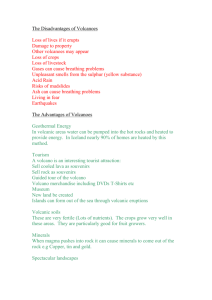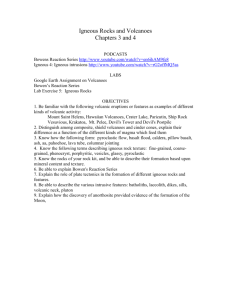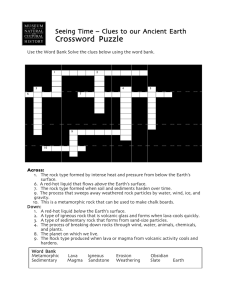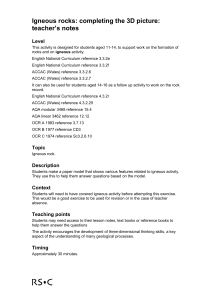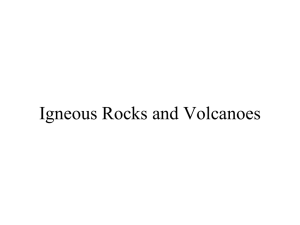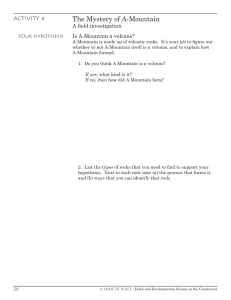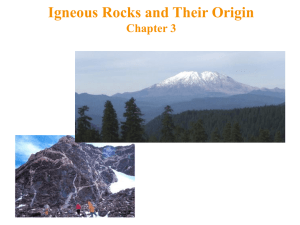Volcano Study Guide
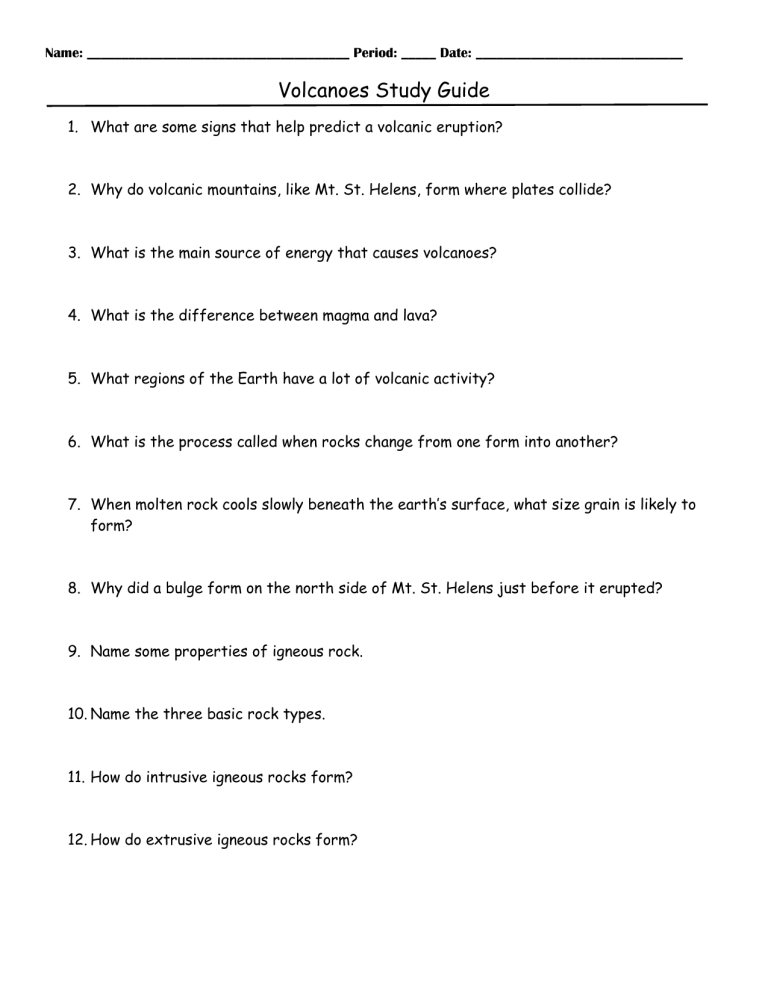
Name: ______________________________________ Period: _____ Date: ______________________________
Volcanoes Study Guide
1.
What are some signs that help predict a volcanic eruption?
2.
Why do volcanic mountains, like Mt. St. Helens, form where plates collide?
3.
What is the main source of energy that causes volcanoes?
4.
What is the difference between magma and lava?
5.
What regions of the Earth have a lot of volcanic activity?
6.
What is the process called when rocks change from one form into another?
7.
When molten rock cools slowly beneath the earth’s surface, what size grain is likely to form?
8.
Why did a bulge form on the north side of Mt. St. Helens just before it erupted?
9.
Name some properties of igneous rock.
10.
Name the three basic rock types.
11.
How do intrusive igneous rocks form?
12.
How do extrusive igneous rocks form?
13.
How does igneous rock crystal formation identify the conditions the rock was formed in?
14.
What causes sedimentary rock to change into metamorphic rock?
15.
What feature is created when magma erupts onto the ocean floor and rapidly cools in water?
16.
What types of liquids are more viscous?
17.
What would change the viscosity of a liquid?
18.
How do scientists classify volcanoes?
19.
What are the 3 common types of volcanoes?
20.
In what ways does lava viscosity affect the shape of a volcano?
21.
How do scientists monitor an active volcano?
22.
Earthquakes almost always occur before a volcano erupts, why?
23.
How can volcanic ash be harmful?
